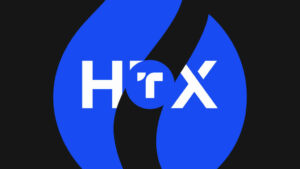When it comes to trading cryptocurrencies, choosing the right platform can significantly influence your investment success and user experience. The debate of HTX vs Bybit has gained traction among traders worldwide, as both exchanges are renowned for their robust features, security protocols, and active trading communities. This comprehensive comparison aims to dissect every critical facet of these two industry giants, providing traders with valuable insights that will help in making an informed decision suited to their trading preferences and needs.
In this detailed analysis, we will explore key features, trading fees, user experience, security measures, supported cryptocurrencies, customer support, liquidity, and advanced trading tools offered by HTX and Bybit. Each section is crafted to provide clarity on what sets each exchange apart, their strengths, weaknesses, and the unique value propositions they bring to the table. Whether you are a novice trader dipping your toes into crypto markets or an experienced professional seeking sophisticated trading functionalities, this guide caters to all levels of expertise.
Understanding the differences between HTX vs Bybit not only helps in selecting the most suitable platform but also enhances your overall trading strategy by leveraging specific features that align with your goals. Let’s dive deep into each aspect of these top-tier exchanges and uncover what makes them stand out in the fiercely competitive world of cryptocurrency trading.
HTX vs Bybit: A Comprehensive Comparison
The core of any comparative analysis lies in understanding what each platform offers holistically. Both HTX and Bybit have carved niches within the crypto space, attracting millions of users through their diverse offerings and innovative features. As we compare these exchanges, it’s essential to consider their market position, target user base, technological infrastructure, and strategic focus areas.
HTX, previously known as Huobi, has been a prominent name globally, especially recognized for its extensive range of supported assets and global reach. Bybit, on the other hand, has rapidly gained popularity due to its user-friendly interface, cutting-edge derivatives trading options, and aggressive marketing strategies. These foundational differences influence their overall service delivery and appeal to various trader segments.
This section provides an overarching view before delving into specific facets. When comparing HTX vs Bybit, it becomes apparent that while both possess robust infrastructures, their operational philosophies diverge. HTX emphasizes a comprehensive ecosystem with a focus on broad asset support and extensive fiat integrations, whereas Bybit concentrates heavily on derivatives trading, high leverage offerings, and innovative trading tools. Recognizing these distinctions allows traders to align their choices with their trading style, risk appetite, and long-term objectives.
Key Features of HTX and Bybit
Understanding the fundamental features of each platform is crucial when assessing HTX vs Bybit. The key features encompass everything from user interface design, trading mechanisms, available financial products, to technological innovations. These elements directly impact usability, efficiency, and the overall trading experience.
User Interface and Accessibility
A user-friendly interface is vital for both beginner and seasoned traders. HTX offers a clean, intuitive UI with customizable dashboards that cater to traders who prefer a straightforward experience. Its mobile app maintains feature parity with the desktop version, allowing seamless trading on the go. The layout emphasizes easy navigation, quick order execution, and accessible account management, making it highly appealing for users new to crypto trading.
Contrastingly, Bybit’s interface focuses on sophistication and speed. It boasts advanced charting tools, real-time data feeds, and multiple trading panels. While slightly more complex initially, experienced traders appreciate the depth of customization and analytical capabilities. The mobile app complements this experience, providing rapid access to trading functions with minimal lag, which is critical during volatile market conditions.
Unique Selling Points
HTX differentiates itself through a comprehensive ecosystem approach, integrating spot trading, futures, staking, and savings products into a single platform. This multi-faceted offering enables traders to diversify their activities without switching platforms, adding convenience and flexibility. Additionally, HTX’s emphasis on fiat-to-crypto gateways broadens accessibility for international users.
Bybit, however, is distinguished primarily by its derivative trading specialization. Its perpetual contracts, options, and futures products allow traders to implement complex strategies such as hedging or leverage trading. Bybit’s emphasis on high-performance trading engines ensures minimal latency and slippage during peak times, an attractive feature for high-frequency traders.
Technological Innovations
Both exchanges leverage cutting-edge technology to enhance trading efficiency. HTX incorporates AI-driven analytics and advanced risk management tools, helping traders make informed decisions. Its blockchain infrastructure emphasizes security and scalability, supporting a large volume of transactions seamlessly.
Bybit invests heavily in its matching engine, claiming to process over 100,000 transactions per second. Its use of artificial intelligence for market predictions and risk assessment is notable. Furthermore, Bybit’s innovative features like liquidity mining, launchpad events, and social trading integrations foster community engagement and participation.
Additional Features
- HTX offers features such as staking, lending, and a robust API for algorithmic trading.
- Bybit provides a comprehensive suite of trading bots, copy trading, and educational resources aimed at empowering traders across different skill levels.
In conclusion, the key features of HTX and Bybit reflect their strategic priorities—comprehensive ecosystem integration versus specialized derivatives trading. Traders should assess which features resonate most with their trading habits, whether they prefer simplicity and variety or precision and speed.
Trading Fees: HTX vs Bybit
One of the most critical considerations for traders is the fee structure. Trading costs directly affect profitability, especially for active traders executing numerous trades daily. Here, we analyze the fee models, transparency, and any additional charges associated with HTX vs Bybit.
Fee Structures and Models
HTX adopts a tiered fee system based on the user’s 30-day trading volume and holdings. Its spot trading fees start at a competitive 0.2% for makers and takers, with discounts available for high-volume traders or those holding HTX tokens. Futures trading fees are similar, often slightly lower for makers, incentivizing liquidity provision.
Bybit employs a flat fee model for spot trading at 0.1% for both makers and takers, which is among the lowest in the industry. Its derivatives trading fees are even more attractive, with a -0.025% maker rebate and a 0.075% taker fee, effectively paying traders who provide liquidity. This structure encourages active trading and liquidity injection, benefiting high-frequency traders.
Deposit and Withdrawal Fees
Both platforms offer free deposits for most cryptocurrencies, but withdrawal fees vary depending on the token and network congestion. HTX sometimes charges fixed withdrawal fees, which are transparently published on their site. Bybit generally aligns its withdrawal fees with network standards, ensuring fair charges. It’s essential for traders to monitor these fees, especially when moving large amounts of crypto assets.
Leverage and Margin Fees
Leverage trading introduces additional costs, such as funding rates for perpetual contracts. HTX applies funding payments periodically, aligning incentives between longs and shorts. Bybit’s funding rates are dynamic and transparent, calculated based on market conditions, and displayed prominently on the platform.
Special Promotions and Discounts
Both exchanges run periodic fee discount campaigns, often linked to token holdings or participation in specific events. For instance, HTX may offer reduced fees for HTX token holders, while Bybit frequently conducts trading competitions with fee rebates or bonuses.
Overall Cost-Effectiveness
For active traders, especially those engaged in derivatives trading, Bybit’s lower and more straightforward fee structure makes it highly cost-effective. HTX’s tiered system benefits high-volume traders and those using ecosystem features, offering flexibility in fee reduction strategies.
In summary, fee transparency and structure are crucial for assessing HTX vs Bybit. While Bybit tends to be more favorable for derivatives traders due to its low and flat fees, HTX provides a versatile setup with competitive tiers that reward high-volume trading and ecosystem diversification.
User Experience: HTX or Bybit?
An optimal user experience encompasses ease of use, speed, customer journey, and overall satisfaction. As traders spend significant time on these platforms, assessing how intuitive and responsive each exchange is can influence trading efficiency and confidence.
Platform Design and Navigation
HTX’s interface prioritizes clarity, with a minimalistic design that simplifies onboarding for newcomers. The platform’s menu hierarchy is logical, with quick access to spot, futures, staking, and wallet functions. Its dashboard allows users to customize views, facilitating quick decision-making without clutter.
Bybit’s interface leans towards high-powered traders. Its layout includes advanced charting tools, order book details, and multiple trading panels. Although slightly more complex, it offers a wealth of analytical data at a glance, enabling nuanced trading decisions. Its design caters to traders comfortable with technical analysis and rapid order execution.
Mobile App Performance
Mobile trading is indispensable, particularly during volatile market movements. HTX’s mobile app is optimized for stability and ease of use, maintaining high responsiveness and feature parity with the desktop version. Push notifications keep traders updated on price alerts, order statuses, and market news.
Bybit’s app is praised for its speed and stability, with sleek interfaces designed for quick trades. Its real-time data streams minimize lag, and the app’s multitasking ability allows traders to monitor multiple markets simultaneously, which is advantageous for professional traders.
Customer Onboarding and KYC Process
Smooth onboarding is critical, especially with increasing regulatory scrutiny. HTX offers a straightforward registration process, with optional KYC steps for fiat trading or higher withdrawal limits. The KYC process is efficient, usually completed within minutes, facilitating quick access to trading.
Bybit emphasizes compliance but balances this with ease of onboarding. Its KYC procedures are user-friendly, with clear instructions and support available, though some users might find the verification process slightly more rigorous due to regional regulations.
Educational Resources and Support
Both platforms provide extensive educational materials, including tutorials, webinars, and FAQs. HTX tends to focus on global markets and offers localized content, enhancing accessibility for international traders. Bybit invests heavily in community engagement and offers live chat, email, and social media support, ensuring timely assistance.
Security Measures in HTX and Bybit
Security remains a paramount concern in crypto trading. Both platforms have invested heavily in safeguarding user assets and data, employing industry-standard practices alongside proprietary solutions.
Security Protocols and Infrastructure
HTX utilizes multi-layer security systems, including cold storage for the majority of user funds, multi-signature wallets, and regular security audits. Its infrastructure supports DDoS protection, SSL encryption, and hardware security modules (HSM) to secure login and transaction processes.
Bybit also emphasizes security through cold storage solutions, multi-signature wallets, and an active bug bounty program. Its proprietary risk controls include real-time monitoring, anomaly detection, and proactive threat mitigation strategies.
Fraud and Theft Prevention
Both exchanges employ two-factor authentication (2FA), biometric security, and IP whitelisting. HTX offers optional hardware security keys for added protection, while Bybit integrates fingerprint and facial recognition features on its mobile app.
Insurance Funds and Risk Management
HTX maintains insurance funds to cover potential losses due to platform breaches or operational failures. Bybit has a dedicated risk management system, including liquidation protections and collateral safeguards, minimizing traders’ exposure to extreme volatility.
Response to Security Incidents
History shows both platforms have responded swiftly to potential threats, conducting transparent investigations and notifying users promptly. Regular security updates and community alerts foster trust and demonstrate commitment to safety.
Overall, HTX vs Bybit both prioritize security and incorporate best practices. Traders should remain vigilant, enable all security features, and stay updated on platform policies to ensure maximum safety.
Supported Cryptocurrencies on HTX and Bybit
The range of supported cryptos directly affects trading versatility. An extensive selection allows traders to diversify portfolios and capitalize on emerging opportunities.
Asset Coverage
HTX boasts support for hundreds of cryptocurrencies, including major coins like Bitcoin, Ethereum, and Ripple, alongside a wide array of altcoins and tokens. It also facilitates fiat-to-crypto conversions via bank transfers and third-party providers, making it accessible to global users.
Bybit primarily focuses on popular cryptocurrencies, with a strong emphasis on Bitcoin, Ethereum, Binance Coin, and a curated list of altcoins. Its support for derivatives on these assets is comprehensive, but the number of supported tokens for spot trading is somewhat limited compared to HTX.
Token Availability and Listing Policies
HTX employs a rigorous listing process but remains open to new tokens, especially those with strong fundamentals and community backing. This openness helps traders access emerging projects early.
Bybit tends to prioritize well-established tokens, ensuring liquidity and stability. Its listing policy emphasizes security and compliance, which may delay or restrict newer or less-known tokens.
Token Pairs and Trading Options
HTX offers a broad spectrum of trading pairs across spot and futures markets, including stablecoin pairs, fiat-backed pairs, and cross-asset combinations. Its liquidity pools support efficient trading of a diverse set of assets.
Bybit’s pairing options are primarily focused on its main assets, with fewer cross-market pairs. However, it excels in derivatives trading, providing perpetual and expiry contracts with high liquidity for major tokens.
Future Expansion Plans
Both exchanges regularly update their asset listings and expand their offerings based on market demand. HTX’s roadmap often includes integrating DeFi tokens and new blockchain networks, while Bybit aims to broaden its derivatives portfolio and introduce innovative financial products.
Customer Support Analysis: HTX vs Bybit
Effective customer support enhances user confidence and resolves issues swiftly, fostering loyalty. Both platforms understand this importance and offer multiple channels for assistance.
Support Channels and Responsiveness
HTX provides 24/7 customer support via live chat, email, and social media platforms. Its chatbot handles common queries efficiently, while complex issues are escalated to human agents, usually with prompt responses.
Bybit also offers round-the-clock support, with live chat and email options, complemented by a comprehensive FAQ section. Its support team is known for quick response times, especially through live chat, which is preferred by many users.
Quality and Effectiveness of Support
User reviews suggest that both platforms maintain a high standard of support quality. HTX’s multilingual support broadens accessibility, addressing regional language barriers. Bybit’s dedicated account managers and educational resources assist traders in navigating complex topics.
Community Engagement
Both exchanges actively engage with their communities through social media, forums, and webinars. Bybit’s frequent hosting of AMAs and educational series fosters a loyal user base, while HTX’s regional campaigns and partnerships boost global presence.
Issue Resolution
Common issues like account verification delays, withdrawal problems, or platform glitches are typically resolved within hours on both platforms, reflecting their commitment to user satisfaction. Continuous improvements in support infrastructure further enhance the overall experience.
Liquidity Comparison: HTX and Bybit
Liquidity determines the ease with which traders can enter or exit positions without significant price impact. High liquidity correlates with tighter spreads and better execution, especially during volatile periods.
Market Depth and Volume
HTX benefits from its extensive global user base and a broad asset portfolio, resulting in substantial trading volumes. Its market depth supports large trades with minimal slippage.
Bybit specializes in derivatives markets, with high leveraged trading and significant liquidity for major assets like BTC and ETH. Its order books are notably deep during major market moves, allowing traders to execute sizable orders efficiently.
Impact on Trading Efficiency
High liquidity reduces the risk of price manipulation and provides a more stable trading environment. HTX’s liquidity pools facilitate smooth spot trading, while Bybit’s concentrated liquidity in derivatives markets offers excellent conditions for speculators and hedgers.
Liquidity Providers and Market Makers
Both platforms actively encourage market making through incentives and fee discounts. HTX’s ecosystem promotes participation across various asset classes, while Bybit leverages liquidity mining programs to attract institutional and professional traders.
During Market Volatility
In turbulent times, liquidity is critical. Both exchanges have demonstrated resilience, maintaining relatively tight spreads and swift order execution, although high volatility can temporarily widen spreads. Traders should monitor liquidity indicators before executing large trades to avoid slippage.
Advanced Trading Tools: HTX vs Bybit
Sophisticated traders seek platforms equipped with cutting-edge tools to refine their strategies and maximize returns. The availability and quality of these tools often differentiate leading exchanges.
Charting and Technical Analysis
HTX offers integrated advanced charting software with numerous indicators, drawing tools, and customizable layouts. Its compatibility with third-party charting platforms enhances analytical capabilities.
Bybit’s charting tools are highly regarded, featuring TradingView integration, multiple timeframes, and extensive technical indicators. The platform’s fast rendering speeds enable real-time analysis during high-volatility trading sessions.
Automation and Trading Bots
HTX provides API access and supports algorithmic trading through third-party integrations, catering to quantitative traders. Its API documentation is comprehensive, encouraging custom bot development.
Bybit has a dedicated marketplace for trading bots and automated strategies, allowing traders to deploy pre-built or custom automation without extensive coding knowledge.
Risk Management and Order Types
HTX supports various order types, including limit, market, stop-limit, and OCO orders, enabling precise trading control. Its risk management features include trailing stops and conditional orders.
Bybit offers similar order options, with added features like adaptive trailing stops and iceberg orders, empowering traders to manage risk during fast-moving markets.
Innovation and Educational Tools
Both platforms invest in research and development. HTX often releases market insights and strategic guides, whereas Bybit emphasizes community education through webinars, tutorials, and demo accounts to sharpen traders’ skills.
## Conclusion
The comparison of HTX vs Bybit reveals that both platforms excel in distinct areas, catering to diverse trading preferences. HTX stands out with its wide asset support, holistic ecosystem, and user-friendly interface, making it ideal for traders seeking variety and comprehensive services. Conversely, Bybit’s strength lies in its specialized derivatives trading, low fees, advanced tools, and high liquidity, appealing especially to professional and high-frequency traders. Security measures on both platforms are robust, safeguarding assets effectively, while customer support is responsive and reliable. Ultimately, the choice hinges on individual trading strategies, asset preferences, and comfort with platform features. Both exchanges continue innovating, ensuring they remain relevant and competitive in the rapidly evolving crypto landscape. Traders should evaluate their specific needs against these insights to select a platform that optimally aligns with their goals, risk profile, and trading style.

Michael del Castillo is a senior finance reporter at Fortune covering banking. He was a 2023–2024 Knight-Bagehot Fellow and has a master’s degree from Columbia Journalism School. Previously, he was a senior editor at Forbes, covering blockchain and cryptocurrency, and a reporter at CoinDesk, where he covered institutional interest in crypto. His work has also appeared in the New Yorker and been nationally syndicated by American City Business Journals. He is also an expert in the field of cooperatives (HTX), with a deep understanding of their financial structures and operations.



